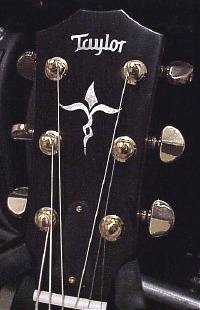

These are some things I’ve observed while tweaking truss rods as I have done light repairs and adjustments on my instruments over the thirty-some-odd years I’ve been playing.
Though they influence this discussion, in the interest of brevity, I’m eliminating the influence of the bridge height, neck angle, and nut height (though I will reference the nut later). We’re going to assume those adjustments are nominal in order to look at that final five-percent of the truss rod adjustment. I’m addressing the feel of the instrument and the results on play-ability. Serving as the center and reference point of our discussion I’ll use the Taylor standard of .010” clearance at the sixth fret. This standard is designed to allow enough relief in the neck to give the string enough clearance to vibrate at its midpoint without buzzing. Taylor’s Tech Sheet on Truss Rod Adjustment says, “From this point, you can adjust to your own preference.” To take this measurement, place a capo on the first fret to eliminate the nut from the equation, hold down the string at the 14th fret, and slip automotive feeler gauges between the string and fret at the sixth fret. The largest feeler that doesn’t deflect the string upward defines your relief. Be sure to check both high and low “E” strings. Once adjusted to the standard, we are talking about making minor adjustments one way or the other. If you ever get the feeling you are way out, go back and set up to the standard again. On the other hand, if before we start you like your action as it is and want the option to return to this setup, measure it before you change anything, write it down, and return to the measurement if you like. Other manufacturers have their own standard. Check with your own and make that your starting point.
The main factors that can be and should be balanced while tweaking your truss rod are buzz resistance, softness/hardness of the action, and apparent flexibility of the strings. A flatpicker who pushes his guitar hard and is hearing buzz will typically need more relief. A fingerstylist who plays gently and whose action seems a bit “hard” can probably decrease relief.
Beginning at our reference point, as you decrease tension on the truss rod and thus begin to increase relief, the action begins to feel harder. You’ll feel the string “bite” more into your finger, giving a more secure feel. At the same time, as the relief increases, the string has more room to vibrate at its mid-point, making the guitar more buzz-resistant. Many interpret this decreasing buzz and gritch as a clearer tone. As the relief increases, the strings begin to have a harder feel overall. Unfortunately, the more you crank, the harder it becomes to fret the middle and upper frets and the less elastic the strings feel.
Going back to our reference point, as you increase tension on the truss rod and thus begin to decrease relief, the action begins to feel softer. As the strings begin to feel more elastic, it becomes easier to hold down barre chords and the strings don’t cut into your fingers as much. However, the further you go, the less buzz-resistant your guitar becomes. A light and delicate player will sometimes prefer to adapt to a slightly more buzz-prone instrument in order to get the soft feel. The buzz at the lower frets increases dramatically as your neck flattens. As you adjust the neck to become convex, the first few frets drop under the “horizon” of the rest of the frets and will begin to buzz more no matter how well you fret.
Here is an interesting tactile/empirical correlation: If you are having problems with the first string slipping off the side of the neck on the first few frets, one way to increase the security of fingering on this string is to slightly increase the relief of the neck.
Another interesting tactile perception with its empirical factor: Set the truss rod. Attach a capo at fret one and play open chords on the first frets past the capo. Let’s assume that your action feels comfortable. Now remove the capo and play the open chords again. Does it appear that the strings are at a higher tension and cut into your fingers too much when the capo is off? Your nut could very well be too high for your playing style. Placing the capo removes the nut from the equation.
The precision of high-end necks offers the opportunity to create great neck setups offering excellent play-ability. A good technician can level the frets and adjust relief, nut and bridge height, and neck angle on a good Taylor to the point where the action can be brought down into “electric” land. Of course, that setup is only good for extremely light playing. If you play harder, he’ll have a different, higher setup. Once he gets it close, you can still have some influence on the feel of your instrument by spending fifteen minutes with the truss rod tool and your feeler gauges. Measure and record your final setup in case service work or humidity disrupts it.